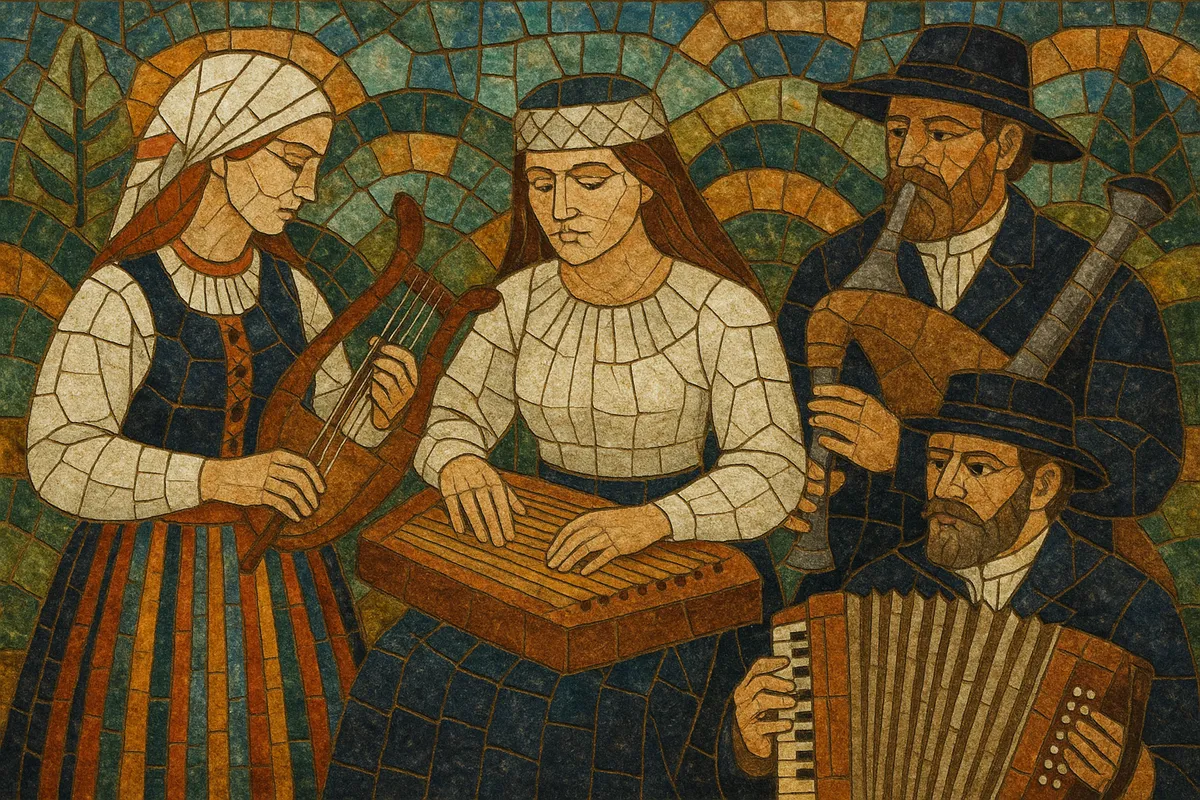Estonian folk music (Eesti rahvamuusika) is the traditional music of the Estonian people, rooted in Finno‑Ugric runo‑song (regilaul) and enriched by Baltic and Scandinavian contacts. Its oldest layer is characterized by trochaic tetrameter verse, narrow‑range modal melodies, and either monophonic delivery or a characteristic drone.
Distinct regional styles include Seto leelo (a powerful women‑led, UNESCO‑recognized polyphonic tradition with a leader–chorus structure and a sustaining drone) and Võro and coastal song dialects. Instrumental traditions feature the kannel (Estonian zither/psaltery), torupill (Estonian bagpipe), talharpa (bowed lyre), fiddle, accordion, flutes, and jaw harp (parmupill). Dance tunes encompass polka, schottische (reilender), mazurka, waltz, quadrille (kadrill), and indigenous forms such as labajalg.
In the 20th and 21st centuries, extensive collecting, choral arranging, and revivals have kept the repertoire vibrant, while contemporary bands blend archival songs and instruments with modern production, folk‑rock, and folk‑metal.
Estonian folk music descends from ancient Finno‑Ugric song culture. Its oldest stratum, regilaul (runo song), uses trochaic tetrameter, formulaic parallelism, and alliteration, typically sung solo or with a heterophonic chorus and a sustaining drone. Regional variants such as Seto leelo developed distinctive polyphonic textures and responsorial forms.
During the 1800s, the Estonian national awakening spurred systematic collecting of folk poetry and melodies. Scholars and teachers documented thousands of runo songs, laying the foundation for national identity alongside the first Estonian Song Festival in 1869. Instrumental dance music (fiddle, kannel, torupill) flourished in rural social life, while newer European couple dances (polka, waltz, schottische) merged with local idioms.
In the early to mid‑20th century, collectors and composers consolidated archives. Choral composers—most notably Veljo Tormis—reimagined archival runo melodies and incantations for modern choirs, helping transmit traditional modal language to new audiences. Despite political constraints under Soviet rule, folk ensembles, festivals, and state folk choirs preserved performance practice and repertory.
After independence in 1991, grassroots revival intensified: village tunes were relearnt, traditional instruments rebuilt, and new generations trained through camps and folk degrees. Bands began fusing archival materials with contemporary aesthetics—looping, rock rhythm sections, subtle electronics—while still foregrounding the kannel, torupill, talharpa, and Seto vocal styles. Today, Estonian folk thrives from local dance houses to international festivals, contributing a distinctive Baltic‑Nordic voice to global roots and world‑music scenes.


